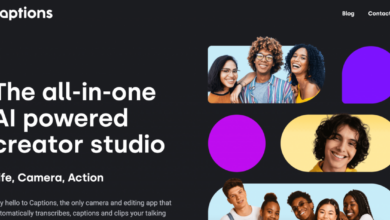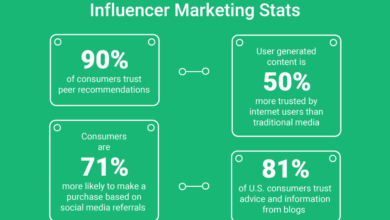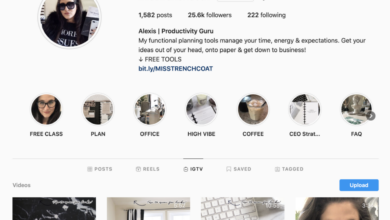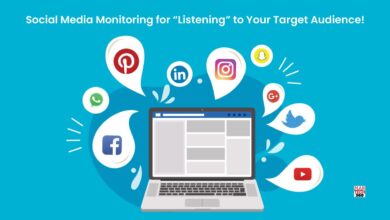
Content Length Your Guide to Optimal Impact
Content length: a critical factor often overlooked in digital content creation. This exploration delves into the nuanced world of varying content lengths, from concise social media updates to in-depth blog posts. We’ll examine how different lengths affect reader engagement, comprehension, and ultimately, success. Understanding the optimal content length for various platforms and purposes is crucial for maximizing your message’s impact.
This comprehensive guide covers defining content length, measuring it effectively, analyzing its impact, and optimizing it for maximum results. We’ll explore different methods for calculating length, examining factors like word count, reading time, and platform-specific recommendations. Case studies will illuminate the practical application of these concepts, showing how adjusting content length can dramatically influence reader interaction and desired outcomes.
Defining Content Length
Understanding the ideal length for your content is crucial for maximizing engagement and achieving your communication goals. Different platforms and mediums require different approaches, and the optimal length often depends on several factors. This exploration dives into the specifics of content length, offering practical examples and insights into the interplay between length, audience, and platform.Content length isn’t a one-size-fits-all solution.
A meticulously crafted 500-word blog post can resonate deeply with its target audience, while a concise 280-character tweet might be the perfect way to spark interest and drive traffic. The following sections will unpack the nuances of content length and illuminate the factors that determine the most effective approach.
Examples of Varying Content Lengths
Content length varies significantly across mediums. Short-form content, such as social media updates and tweets, often adheres to character limits. For instance, a Twitter post might contain 280 characters, emphasizing brevity and impact. Longer-form content, like blog posts or articles, typically offers more comprehensive information. A blog post on a complex topic might range from 500 to 1500 words, providing a thorough exploration of the subject matter.
News articles and in-depth analyses on LinkedIn or other professional platforms often extend beyond 1000 words.
Factors Influencing Optimal Content Length
Several factors influence the ideal length for your content. Topic complexity is a primary determinant. A simple topic might only need a short-form update, while a complex issue requires a more comprehensive treatment. The target audience also plays a significant role. A younger audience might prefer concise and engaging content, while a more mature audience may appreciate detailed analyses.
Platform guidelines also dictate content length. Platforms like Twitter have strict character limits, whereas LinkedIn articles allow for more extensive explorations.
Relationship Between Content Length and Engagement Metrics
The relationship between content length and engagement metrics is complex. While longer content can provide in-depth information, potentially leading to higher engagement, shorter content can be more easily digestible and encourage quicker interactions. The optimal length often depends on the specific platform and target audience. A well-written and engaging short-form update can garner significant attention, while a lengthy article may need careful crafting to maintain reader interest.
Optimizing content length is crucial for engagement, and recent events like the Silicon Valley Bank crisis highlight the importance of concise communication. For example, Michelle Draper, CMO of Silicon Valley Bank, had to deliver clear and impactful messages in a complex situation. Ultimately, the right content length is about hitting the sweet spot between thoroughness and brevity.
Data analysis and A/B testing can help determine the ideal length for specific content pieces.
Content Length Recommendations by Platform
| Platform | Ideal Length Range | Reasoning |
|---|---|---|
| 280 characters | Short-form updates, quick information dissemination. | |
| 1000-2000 words | In-depth articles, thought leadership pieces, and detailed analyses. | |
| Blog Post | 500-1500 words | Comprehensive information, thorough explorations of topics, allowing for detailed explanations. |
Measuring Content Length
Understanding content length is crucial for optimizing readability, engagement, and search engine visibility. It’s not just about counting words; it’s about gauging the appropriate amount of information to convey a message effectively. Different metrics provide varying perspectives on content length, each with its own strengths and weaknesses.Various methods are employed to assess content length, ranging from simple word counts to more sophisticated estimations of reading time and comprehension.
These methods allow content creators to tailor their work to specific audiences and objectives. A deeper understanding of these methods allows for better control over the overall impact of the content.
Word Count
Word count is a straightforward method for determining content length. It simply tallies the total number of words in a piece of writing. This metric is simple to calculate and widely used, but it fails to account for the impact of formatting, sentence structure, and vocabulary complexity on readability.
Character Count
Character count, which includes spaces and punctuation, offers a more granular measure of content length. However, its usefulness is limited because it doesn’t provide insights into readability or engagement. While potentially helpful for technical documents or specific character limitations, it’s less valuable for general content evaluation.
Reading Time
Reading time estimates the time it would take a typical reader to complete the content. This metric considers factors like sentence length, vocabulary complexity, and overall writing style. Reading time estimation tools often use averages, and the results can vary based on individual reading speed and comprehension.
Estimated Comprehension Time
Estimated comprehension time assesses the time needed for a reader to fully grasp the information presented. This metric considers not only reading speed but also the complexity of the ideas, the depth of analysis required, and the reader’s prior knowledge. Tools that estimate comprehension time are often sophisticated and depend on factors like the level of engagement and the density of information presented.
Impact of Formatting on Perceived Length
Formatting significantly impacts the perceived length of content. Large blocks of text can feel overwhelming, while visually appealing content with headings, subheadings, bullet points, and images can make the same amount of information appear shorter and more digestible. Images and videos can also significantly affect the perceived reading time, potentially increasing engagement and reducing perceived length.
Comparison of Content Length Metrics
| Metric | Calculation | Implications |
|---|---|---|
| Word Count | Total words in text | Simple, but doesn’t account for formatting, sentence structure, or vocabulary complexity. |
| Character Count | Total characters in text (including spaces and punctuation) | Provides a more granular measure, but doesn’t consider readability or engagement. Useful for specific character limits. |
| Reading Time | Estimated time to read, considering sentence length, vocabulary, and writing style. | Accounts for readability, but varies based on individual reading speed and comprehension. A good starting point. |
| Estimated Comprehension Time | Estimated time to fully grasp the information, considering complexity of ideas and reader’s prior knowledge. | Considers the cognitive effort required for understanding. Useful for evaluating the depth of the content. |
Impact of Content Length
Content length isn’t just a number; it’s a crucial factor influencing reader engagement, performance, and ultimately, the success of any online content. Understanding how different lengths impact various metrics allows content creators to optimize their work for maximum effectiveness. From short, snappy updates to in-depth, comprehensive guides, the optimal length varies depending on the specific goals and target audience.Different content lengths cater to diverse reader needs and preferences.
A concise, well-structured short piece can grab attention quickly, while a longer piece provides more comprehensive information and builds stronger connections with engaged readers. This interplay between length and impact directly affects various aspects of online content performance, including comprehension, engagement, conversion rates, and .
Reader Comprehension and Engagement
Understanding how content length affects reader comprehension and engagement is vital for crafting effective content. Short pieces, ideally suited for quick updates or highly specific information, often facilitate higher comprehension due to their concise nature. Readers are more likely to fully grasp the core message and retain key takeaways in shorter formats. Conversely, longer pieces, particularly those delving into complex topics or providing in-depth analysis, might initially present a challenge in comprehension.
The longer format, however, allows for a more nuanced exploration of a subject, enabling deeper engagement and stronger reader retention.
Content length is a tricky thing. Sometimes, a shorter post can pack a punch, but other times, exploring complex topics like those found in dark posts requires more space to delve into the nuances. Ultimately, the optimal length depends on the subject matter and the depth you want to achieve, and that often requires careful consideration.
Correlation Between Content Length and Conversion Rates
Content length significantly correlates with conversion rates. While short-form content might attract initial interest, it often lacks the depth necessary to convince a reader to take a desired action, like purchasing a product or signing up for a newsletter. Longer pieces, on the other hand, offer greater opportunity to build trust, address concerns, and provide in-depth information, ultimately leading to higher conversion rates.
The depth and thoroughness often provided in longer content build a more robust relationship between the reader and the content, resulting in more informed decisions.
Influence of Content Length on
Search engines often favor comprehensive content. Longer, well-researched articles tend to rank higher in search results. Search engines interpret longer content as a sign of thoroughness and authority, positively impacting rankings. However, the sheer length of content isn’t the sole determinant; quality, relevance, and user experience remain paramount.
Content Length and User Experience (UX)
Content length directly impacts user experience. Short content can be easily consumed and digested, leading to a positive user experience. Conversely, overly long content can overwhelm and frustrate readers, hindering the user experience. A balance is key. Content should be tailored to the topic and target audience, providing just the right amount of information without overwhelming the reader.
The ideal length is often determined by the specific context and the user’s needs.
Impact of Content Length on Various Metrics
| Content Length | Comprehension | Engagement | Conversion Rate |
|---|---|---|---|
| Short | High | Medium | Low |
| Medium | Medium | High | Medium |
| Long | Low (initially) | Low (if poorly structured) | High (if providing value) |
The table above illustrates the general impact of different content lengths on key metrics. While short content can be easily understood, it often lacks the depth to drive conversions. Conversely, long content, while potentially complex, can deliver more value and potentially lead to higher conversion rates. The ideal length is contingent on the specific goals and target audience.
Optimizing Content Length

Crafting content that resonates with readers hinges significantly on its length. Understanding the optimal length for various purposes is crucial for maximizing impact and engagement. Simply producing a long piece of content doesn’t automatically translate to better results; rather, the focus should be on tailoring the length to align with the specific needs of the target audience and the goals of the content itself.Effective content optimization involves a nuanced approach, going beyond mere word counts.
It necessitates a deep understanding of user expectations, the desired outcome, and the overall context in which the content will be presented. This involves careful consideration of the intended audience, the platform where it will be published, and the message it aims to convey.
Strategies for Adjusting Content Length
Understanding the audience’s attention span and the platform’s format is paramount in optimizing content length. Adjusting the length to maximize impact involves analyzing what works best for the target audience and platform.
- Prioritize Clarity and Conciseness: Avoid unnecessary jargon or lengthy explanations. Focus on delivering the core message effectively and efficiently. Redundant information or overly complex sentence structures can quickly overwhelm the reader and decrease engagement. Instead, break down complex concepts into digestible chunks.
- Break Down Long-Form Content: Long articles, reports, or guides can be challenging for readers to consume in one sitting. Dividing them into smaller, digestible pieces, using subheadings, bullet points, and visuals, makes them more accessible and encourages engagement.
- Employ Visual Aids: Incorporating visuals like images, infographics, or videos can break up text and make the content more visually appealing, thereby maintaining reader interest and facilitating understanding. These aids can also enhance comprehension of complex information.
- Utilize Different Content Formats: Explore different formats such as short-form articles, videos, or infographics. This diversification caters to a wider range of preferences and consumption habits. The right format can enhance engagement and increase the reach of the content.
Techniques for Condensing Existing Content
Sometimes, existing content might need to be adjusted for a specific platform or audience. Efficient condensing techniques can significantly improve readability and engagement without compromising the core message.
- Identify Key Information: Determine the essential elements of the content. Focus on extracting the core ideas and eliminating irrelevant details. This process ensures the content remains focused and impactful.
- Paraphrase and Restructure: Rephrase sentences and paragraphs to express the same concepts more concisely. Restructure the content to enhance clarity and flow. Consider alternative sentence structures and word choices to maintain the original message while reducing the overall length.
- Combine Similar Points: Group related points together to streamline the content. This can create a more cohesive and impactful presentation. Identifying and consolidating similar concepts can significantly reduce redundancy and improve overall clarity.
- Eliminate Redundancy: Carefully review the content for any repeated information. Eliminate or consolidate these redundant sections to create a more concise and engaging reading experience.
Creating Content of Appropriate Length for Different Purposes
Tailoring content length to the specific purpose is essential for achieving maximum impact. Different types of content demand different approaches to length optimization.
Optimizing content length is key for engagement, but how do you know what works best? Justin Boatman, SVP at Riskalyze, recently earned the Marketer of the Week award at JAR Digital justin boatman svp riskalyze marketer of the week , showcasing effective strategies for reaching target audiences. Ultimately, finding the sweet spot for content length depends on understanding your audience and goals.
- Blog Posts: Blog posts typically benefit from a moderate length, allowing for in-depth discussion without overwhelming the reader. A length of 500-1500 words is often effective, balancing sufficient detail with readability.
- Social Media Posts: Social media posts are best kept short and sweet, focusing on a single key message. A concise and engaging headline or compelling statement is more likely to grab attention in the fast-paced social media environment.
- White Papers: White papers require a comprehensive approach, offering detailed information and in-depth analysis. Their length typically ranges from 3000 to 10000 words, depending on the complexity of the topic and the audience’s needs.
Importance of Breaking Down Long-Form Content
Long-form content, while potentially comprehensive, can be challenging to consume in its entirety. Breaking it down into smaller, digestible pieces improves engagement and accessibility.
- Improved Readability: Dividing long-form content into smaller segments improves readability, making it easier for readers to follow the information and retain key concepts.
- Enhanced Engagement: Shorter pieces are more likely to hold a reader’s attention, encouraging continued engagement with the content. Readers are more likely to complete a series of shorter pieces than a single, lengthy one.
- Increased Accessibility: Breaking down long-form content makes it more accessible to a wider audience, including those with limited time or attention spans.
Step-by-Step Procedure for Optimizing Content Length
A systematic approach to optimizing content length ensures the content aligns with user needs and maximizes impact.
- Analyze Target Audience: Identify the target audience’s preferences, reading habits, and available time.
- Define Content Goals: Determine the primary objective of the content. What specific actions do you want the reader to take?
- Assess Existing Content: Evaluate the existing content’s structure, length, and readability. Is the current format effective?
- Adjust Content Length: Based on the analysis, adjust the length of the content. Break down long-form content into smaller pieces or condense lengthy content to achieve optimal length.
- Refine Content Structure: Ensure the content is well-structured, with clear headings, subheadings, and bullet points, and that visuals are incorporated where appropriate.
- Test and Iterate: Monitor the content’s performance and gather feedback to refine the optimization process.
Content Length Case Studies

Understanding the optimal content length is crucial for maximizing engagement and achieving desired results. Different content types and target audiences often require varying lengths to effectively communicate information and maintain reader interest. This section explores successful examples of content with diverse lengths, analyzing strategies used to determine optimal length and examining cases where length impacted success.
Successful Content Length Examples
Various content types demonstrate the importance of tailoring length to specific goals. For instance, a concise blog post can quickly convey key takeaways, while a comprehensive white paper requires sufficient depth to thoroughly address complex topics. Effective content often strikes a balance between brevity and comprehensiveness, catering to the audience’s needs and the message’s complexity.
Determining Optimal Length Strategies
Content creators employ several strategies to identify optimal length. Analyzing user engagement metrics like time on page, bounce rate, and click-through rates provides valuable insights. A/B testing different content lengths allows for empirical comparison of performance. Furthermore, understanding the target audience’s reading habits and preferences helps determine an appropriate length. For example, a younger audience might respond better to shorter, more visually engaging content, while a more experienced audience might appreciate longer, in-depth articles.
Content creators should consider these factors to develop content that resonates with their audience.
Content Too Short and Too Long: Examples and Impact
Examples of content that was too short often resulted in incomplete information, leading to user dissatisfaction. For example, a product description too brief may fail to adequately address customer needs, hindering conversions. Conversely, content that is excessively long can lead to reader fatigue and reduced engagement. A lengthy technical article that lacks clear structure and concise explanations might alienate readers, preventing them from absorbing the key information.
Impact of Length on Content Success
The impact of content length on success varies based on the type of content and the audience’s needs. For example, a concise social media post may achieve high engagement through its brevity, while a long-form blog post might generate more leads through comprehensive information. A well-structured, detailed report, on the other hand, may require a substantial length to effectively communicate complex data.
Content Type and Optimal Length
| Content Type | Optimal Length | Reasoning |
|---|---|---|
| Social Media Posts | Short (100-300 words) | Concise, easily digestible, visually appealing |
| Blog Posts | Medium (500-2000 words) | Provides in-depth information, caters to varied interests |
| Product Descriptions | Medium (200-500 words) | Clearly highlights key features, encourages purchase |
| White Papers | Long (2000+ words) | In-depth analysis, detailed technical information |
Ending Remarks
In conclusion, content length is not a one-size-fits-all concept. The ideal length depends on the platform, target audience, and the specific goals of your content. By understanding the factors that influence content length, and the methods for measuring and optimizing it, you can craft more effective and impactful content. This guide provides a framework for tailoring your content length to achieve optimal results.
Remember, consistent testing and adaptation are key to mastering the art of content length.





